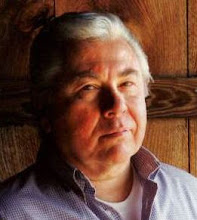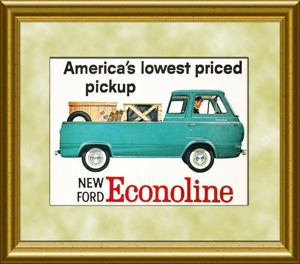 From the C. H. Topping website:
From the C. H. Topping website:"The first question people ask is about water and dust. If you've driven a drum brake equipped car through water you know braking is non-existent. With holes in the drums, centrifugal force not only evacuates dust, but water immediately as well. But the main benefit is the fact that when drums are vented properly, so as to eliminate balance and material integrity problems, they virtually eliminate fade, which is.the primary reason discs replaced brakes while racing at the dry lakes. He figured drums in the first place. Gasses are vented as well, as the holes create what amounts to a venturi effect, venting gases created by compression of air between the shoes and drum that would otherwise be trapped in a stock, unvented drum, hindering braking efficiency. This also holds true with disc brakes (believe it or not), so venting is beneficial here, too."
 "Another benefit is reduced unsprung weight, which improves ride quality. Surprisingly, a brake disc weighs three times what a drum does, and calipers are four times heavier than a wheel cylinder. Cars designed with discs take all those extra pounds (approximately 60 total) into consideration in their suspension system."
"Another benefit is reduced unsprung weight, which improves ride quality. Surprisingly, a brake disc weighs three times what a drum does, and calipers are four times heavier than a wheel cylinder. Cars designed with discs take all those extra pounds (approximately 60 total) into consideration in their suspension system."Another benefit that is not mentioned on the C. H. Topping website is that ventilating brake drums is a lot less expensive than converting to disc brakes!
Studs properly staked to secure the drums to the hubs....
 After I got the drums/hubs back from C. H. Topping, I abrasive blasted them and painted them using the same heat-resistant paint that I used on the rear drums.
After I got the drums/hubs back from C. H. Topping, I abrasive blasted them and painted them using the same heat-resistant paint that I used on the rear drums.While I was waiting for the paint to dry I soaked and softened the grease seals. I made "soaking containers" from pieces of aluminum foil and I used motor oil to soften the leather sealing material. Notice the air bubbles escaping from the leather as the oil soaked in.
 I installed new roller bearings and seals before putting the completed assemblies on the vehicle.
I installed new roller bearings and seals before putting the completed assemblies on the vehicle.
 A bearing greaser makes it simple to lubricate bearings....
A bearing greaser makes it simple to lubricate bearings....
This Alemite cordless grease gun one of the handiest tools to have around the garage. It is a heck of a lot easier to use than either a manual or pneumatic version. In fact, my wife, Doris, really enjoys using it. Anything to make the wife happy!

Notice the Green Grease that I used to lubricate the bearings. Green Grease is a very tenacious synthetic lubricant that is hard to clean up. It is very sticky and waterproof. In other words....perfect for lubricating.
 After flushing and bleeding the brake system we mounted the old wheels and tires so that the truck could be taken away to the paint shop to have a few issues corrected.
After flushing and bleeding the brake system we mounted the old wheels and tires so that the truck could be taken away to the paint shop to have a few issues corrected. Now it is time to get serious with refinishing the remaining parts so that the reassembly process can proceed when the truck returns in February or March. With any luck at all, the truck will be on the road in the Summer of 2008!
Now it is time to get serious with refinishing the remaining parts so that the reassembly process can proceed when the truck returns in February or March. With any luck at all, the truck will be on the road in the Summer of 2008!





No comments:
Post a Comment